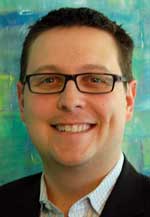 Dr. Jeff Glaizel
Dr. Jeff Glaizel
As technology enhances many aspects of our lives, it should come as no surprise that technology is also improving dentistry. Recognizing these benefits, JCDA wants to help dentists make the transition from a paper-based profession to one that leverages the technology that many of us already use in our personal lives. I'm honoured and excited to be working with JCDA to examine how the use of digital communications and e-health technologies can help enhance practice management and patient care.
I am pleased to have been invited by JCDA to start a regular series of articles that will address issues affecting the digital dental office of the future. The main focus of this "Plugged In" series is to discuss the practical implications of emerging technologies for dental offices and how dentists can benefit from them as quickly and seamlessly as possible. I will be raising issues related to everything digital in dentistry, proposing solutions and providing a forum for discussing clinical choices.
About me and my focus
Allow me to introduce myself—my name is Jeff Glaizel, a practising dentist from Toronto with a special interest in health information technology. I've always been interested in working with technology to increase efficiencies in my office and improve patient care, but I did not know how to get involved until one day in 2006, when a 13-year-old patient, accompanied by his father, came in after hours to have his 2 upper premolars extracted. The referral sheet from the orthodontist was not in my office. I called, emailed and sent a Blackberry message to the orthodontist but he did not respond. The father and son were not happy as I could not complete treatment and had to reschedule the extractions. The father said to me, "How can I trust you guys to treat my son's teeth if you can't get a letter from down the street into your office?"
He was right. In 2006, I was using real time messaging on my Blackberry, but dentists were still using fax and mail—delivered by the postal system—to send clinical information. This made me realize that the days of paper-based bookkeeping systems and the paper referral slip should be over.
That evening, I started researching how to leverage information technology to improve the communication process with all players in the dental community. It became clear that there was a huge gap between the needs of dentists, with respect to information technology, and the knowledge we had as a profession. This shocked me; computer-based information systems are routine in dentistry, yet dentists are not educated or supported in the technology-specific aspects of running a dental practice. There are currently no Canadian dental informatics departments and only 3 in the United States.
I decided to try and make a difference and that is when www.myDDSnetwork.com was born. This site connects dentists and other dental professionals at a clinical level in a secure environment. The myDDSnetwork.com platform has been used to digitally transmit hospital records to doctors' offices, as part of a health care project in Ontario.
I have also been on numerous committees and given lectures on electronic records, privacy and security. I was a member of the Royal College of Dental Surgeons of Ontario (RCDSO) working group on electronic records management that published ground-breaking guidelines in March 2012 for the dental profession. I believe these guidelines are an important first step and highlight a need for organized dentistry to be actively involved in dental informatics.
CDA has made a concerted effort to support the digital connectivity of dentists. Through the implementation of the JCDA-OASIS project, CDA is providing a clinical decision support service for dentists. In addition, CDA has received Canada Health Infoway funding, in partnership with Continovation Services Inc., to connect dentists for e-referrals and e-consultations using ITRANS™ services—technology that gives every dentist in Canada the ability to securely communicate in real time in an environment that meets regulatory and privacy guidelines. These commitments to support and provide solutions for Canadian dentistry are just the beginning of the process of bringing dentistry in line electronically with other professions and industries in Canada.
I look forward to connecting with you.
